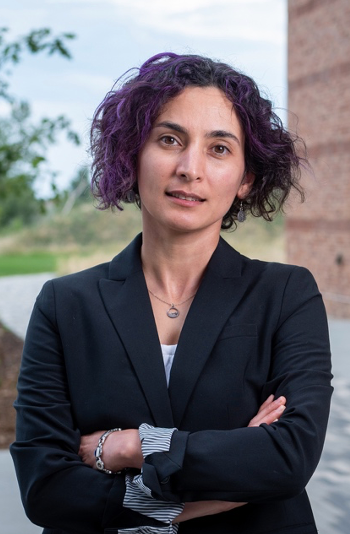
Best of the Week: Food and Beverage Analysis, Handheld X-Ray Technology, Chaos Theory
Top articles published this week include a review article on food and beverage analysis, handheld X-ray technology, and chaos theory.
This week, Spectroscopy published various articles that covered many topics in analytical spectroscopy. This week’s articles feature techniques including inductively coupled plasma–mass spectrometry (ICP-MS), ICP-optical emission spectrometry (ICP-OES), X-ray fluorescence (XRF), and Raman spectroscopy. Below, we’ve highlighted some of the most popular articles, according to our readers and subscribers. Happy reading!
This review discusses recent advances in spectroscopic techniques for food and beverage analysis. Key methods include ICP-MS for detecting heavy metals in food packaging and ICP-OES for elemental screening in solid foods, such as coffee. Raman spectroscopy, including SERS, SORS, and SESORS, is employed for rapid food quality and safety assessments. SERS combined with molecularly imprinted polymers (MIPs) detects trace toxic substances, while microfluidic platforms analyze foodborne pathogens (1). Raman spectroscopy is also used to measure ethanol and toxic alcohol levels in beverages and spirits accurately (1).
This article discusses a groundbreaking study by the University of Porto, revealing that handheld X-ray fluorescence spectrometers (HHXRF) can be used to analyze cigarette ash, providing a new tool for forensic investigations. Published in Forensic Science International, the study demonstrates that HHXRF can distinguish between different tobacco brands by analyzing the elemental concentration of their ash (2). The non-destructive nature of this technique allows for on-site analysis, preserving sample integrity. Researchers conducted extensive analyses, confirming the technology’s ability to differentiate between brands (2). This advancement offers law enforcement a novel, efficient method to link suspects to crime scenes through cigarette ash, marking a significant step forward in forensic science.
This article discusses a novel approach to cancer diagnosis, combining Raman spectroscopy with chaos theory to enhance the accuracy and efficiency of detecting serious diseases. Researchers from Xinjiang University in China explored this method in a study published in Expert Systems with Applications, focusing on lung cancer, glioma, renal cell carcinoma, and esophageal cancer. By analyzing Raman spectral data using chaos theory, they extracted chaotic features such as correlation dimension and Kolmogorov entropy, which were then applied to various machine learning models (3). The study found that this approach yielded diagnostic results comparable to traditional methods, with potential for further improvement (3). This innovative integration of chaos theory with Raman spectroscopy could pave the way for more advanced, AI-assisted diagnostic tools, ultimately improving patient outcomes and advancing medical diagnostics (3).
This article discusses a recent study published in Scientific Reports that explores the use of advanced spectroscopic techniques, specifically Fourier transform infrared (FT-IR) and FT-Raman spectroscopy, combined with machine learning to distinguish between platinum-resistant and platinum-sensitive ovarian cancer tissues. Ovarian cancer's high lethality and recurrence rates, particularly because of resistance to platinum-based chemotherapy, make it crucial to identify platinum resistance early (4). The study, conducted by researchers at Fryderyk Chopin University Hospital in Poland, found that FT-IR and FT-Raman spectroscopy could reveal molecular differences in ovarian cancer tissues, with machine learning algorithms achieving near-perfect accuracy in distinguishing between resistant and sensitive tissues (4). This breakthrough offers a reliable method for clinicians to tailor treatments more effectively, improving patient outcomes and paving the way for similar advancements in other cancer types (4).
This article discusses the application of μ-Raman spectroscopy in analyzing ancient ceramics. Published in Applied Clay Science, the study demonstrates the technique’s superiority over traditional methods in providing detailed insights into ceramic production techniques, firing conditions, and material composition. The research revealed that μ-Raman spectroscopy could accurately determine firing temperatures and identify raw materials, such as low-CaO base clay mixed with volcanic temper from Mount Vesuvius (5). This non-destructive method offers significant advancements in archaeological research and conservation science (5).
References
(1) Workman, Jr., J. A Review of the Latest Spectroscopic Research in Food and Beverage Analysis. Spectroscopy. Available at:
(2) Workman, Jr., J. Handheld X-Ray Technology Unveils New Forensic Tool. Spectroscopy. Available at:
(3) Wetzel, W. Chaos Theory and Raman Spectroscopy Used to Detect Cancer. Spectroscopy. Available at:
(4) Wetzel, W. New Spectroscopy Techniques Offer Hope in Identifying Platinum-Resistant Ovarian Cancer. Spectroscopy. Available at:
(5) Wetzel, W. μ-Raman Spectroscopy Analysis of Ancient Ceramics. Spectroscopy. Available at:
Newsletter
Get essential updates on the latest spectroscopy technologies, regulatory standards, and best practices—subscribe today to Spectroscopy.





